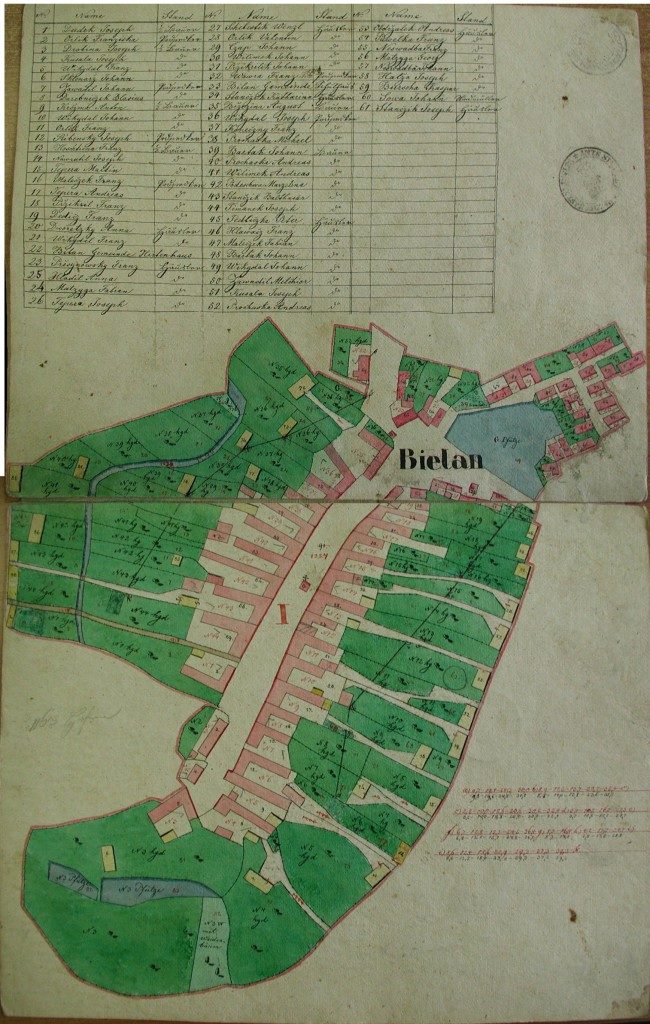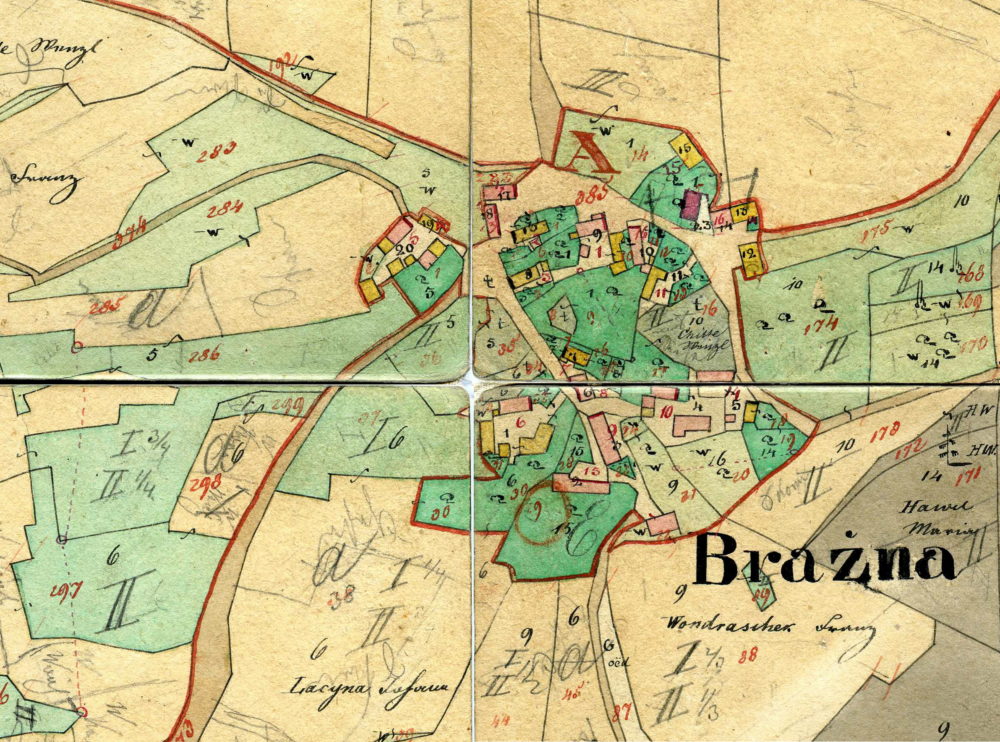Lives of our ancestors are inseparable from the houses they lived in and the farms they worked on. If you already searched through farm and land register books (see our previous articles here and here), the next logical step is to put the information you found together with a visual of the farm. The best tool to do it with is the Stable Cadastre – that is indicator sketches and imperial imprints.
What are indicator sketches and imperial imprints?
Indicator sketches are hand maps created during the forming of the Cadastre called “Stable”. The sketches were made like casual copies of original maps that were being created at the same time, but with detailed measuring. The process took place in Moravia and Silesia in 1824-1830 and 1833-1835, in Bohemia in 1826-1830 and 1837-1843. A copy of every original map from the Stable Cadastre had to be sent to the archives. Copies from this legal deposit system are called imperial imprints.
Where can we find indicator sketches and imperial imprints?
Indicator sketches are now kept in the National Archives in Prague, Moravian Museum in Brno and Provincial Archives in Opava. However, most of them can be found online, that is:
- http://archivnimapy.cuzk.cz/ (imperial imprints and indicator sketches for Bohemia, Moravia and Silesia)
- http://www.mza.cz/indikacniskici/ (indicator sketches for Moravia)
Searching for imperial imprints is easy on the following website: www.oldmapsonline.org. All you need to do is to write a name of the municipality and you will see the links and other maps from the region in a column on the right side.

What can we learn from the indicator sketches?
We can learn a lot because they contain so many details. A complete key to all the colors and symbols can be found on archivnimapy.cuzk.cz. We are going to present you only the basic and most common facts, assuming that we are interested in buildings and adjacent land.
- Red color in the map means masonry buildings.
- Wooden buildings have yellow color.
- Blue color means water.
- Gardens, meadows and pasturelands are made in different shades of green.
- Vineyards are pink.
- Forests have dark grey color.
How to search for a house or a land?
You need to know the number of the house your ancestor lived in and hope that numbers in the municipality haven’t been changed. The task is easier if both indicator sketches and imperial imprints are available for your municipality, because sketches contain house numbers. You can see it on (or nearby) the house in red color. Lot number is in black color. However, numbers are the other way around on the land – lot number is red and house number is black. More often than not, you can also see a name of the owner in the sketches.
It doesn’t go that smoothly if you have nothing by imperial imprints. In the imprints, the only data you find are lot numbers (lot number with a house is black, plot of land number is red), no house number can be found there. But you can deal with it, too, you just need to find out what lot your ancestor’s house stood at. Online Cadastre of Real Estate will help you with it (http://nahlizenidokn.cuzk.cz/). In the database, you can find the house by its house number and you will know the lot number. But just as in the previous case, hope that numbers in the municipality haven’t been changed. The best-case scenario is to know both a house number and a lot number and always check and compare the house’s position in imperial imprints, Cadastre and an updated online map (e.g. Google Maps or Mapy.cz) at the same time.

